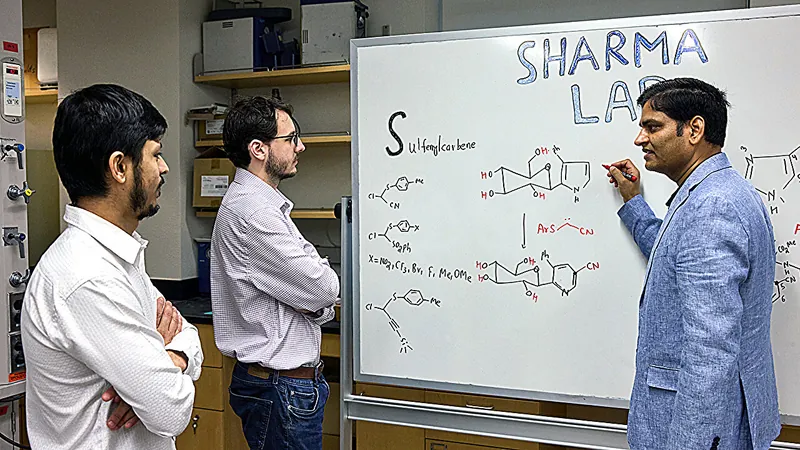
Could a Single Carbon Atom Revolutionize Drug Discovery?
2025-05-06
Author: Nur
A Transformative Breakthrough in Pharmaceuticals
In a groundbreaking development, a research team from the University of Oklahoma has unveiled a method that could drastically speed up drug discovery while slashing pharmaceutical development costs. Their innovative work, recently featured in the Journal of the American Chemical Society, presents a safe and sustainable technique for incorporating a single carbon atom into drug molecules at room temperature.
Unlocking New Possibilities with Carbon Atoms
This new method introduces versatility through a process known as skeletal editing, which directly modifies nitrogen-containing rings—vital components in many medicines. Led by Professor Indrajeet Sharma, the team utilizes a swift-reacting chemical called sulfenylcarbene to transform existing drugs into promising new candidates.
"By selectively introducing a single carbon atom in the final stages of development, we can alter a molecule's biological and pharmacological properties while preserving its essential functions," Sharma explained. "This approach could open unexplored avenues in the realm of drug discovery."
Safer, More Efficient Drug Development
Previous attempts to achieve similar outcomes relied on hazardous reagents that posed safety risks and had limited compatibility with different functional groups. However, Sharma's team has crafted a bench-stable reagent that generates sulfenylcarbenes under non-toxic, metal-free conditions, achieving remarkably high yields of up to 98%. This avoids the health risks associated with metal-based carbenes, which are often toxic to humans.
Revolutionizing DNA-Encoded Libraries
The implications of this research extend into the rapidly evolving field of DNA-encoded library (DEL) technology. DEL platforms enable rapid screening of billions of small molecules for their ability to interact with disease-relevant proteins.
The team’s method, which operates under metal-free and room-temperature conditions, is ideal for incorporation into DEL libraries. Unlike other chemical reactions that necessitate high heat or harsh chemicals, this innovative approach is gentle enough to be used with molecules linked to DNA.
The Future of Affordable Healthcare
By collaborating with the Damian Young group at Baylor College of Medicine, Sharma's research is poised to enhance both the chemical diversity and biological relevance of DEL libraries—two critical hurdles in the drug discovery process.
Sharma further emphasized the financial implications: "The expense of many drugs largely hinges on the number of synthesis steps required. By adding a carbon atom in the later stages of development, we can drastically reduce these steps, making new drugs more affordable. It’s akin to renovating a building instead of constructing one from the ground up. By simplifying large-scale production of these drugs, we could substantially lower healthcare costs worldwide."
A Potential Game-Changer in Medicine
This revolutionary method has the potential to reshape the landscape of drug development, providing hope for more effective treatments at a fraction of current prices. As researchers continue to explore its applications, the days of expensive and labor-intensive drug production may soon be behind us.


 Brasil (PT)
Brasil (PT)
 Canada (EN)
Canada (EN)
 Chile (ES)
Chile (ES)
 Česko (CS)
Česko (CS)
 대한민국 (KO)
대한민국 (KO)
 España (ES)
España (ES)
 France (FR)
France (FR)
 Hong Kong (EN)
Hong Kong (EN)
 Italia (IT)
Italia (IT)
 日本 (JA)
日本 (JA)
 Magyarország (HU)
Magyarország (HU)
 Norge (NO)
Norge (NO)
 Polska (PL)
Polska (PL)
 Schweiz (DE)
Schweiz (DE)
 Singapore (EN)
Singapore (EN)
 Sverige (SV)
Sverige (SV)
 Suomi (FI)
Suomi (FI)
 Türkiye (TR)
Türkiye (TR)
 الإمارات العربية المتحدة (AR)
الإمارات العربية المتحدة (AR)